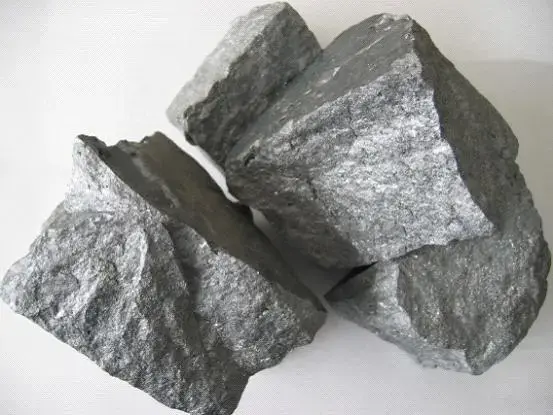What metals are used in high-quality cylpebs grinding media?
The composition of cylpebs grinding media is a carefully balanced blend of various metals, each contributing to specific properties and performance characteristics. The primary metals used in high-quality cylpebs include:
Iron: The Foundation of Strength
Iron forms the base material for most cylpebs grinding media. It provides the necessary strength and durability required for grinding applications. The iron used is typically high-grade cast iron, which offers excellent wear resistance and toughness.
Carbon: Enhancing Hardness
Carbon is a crucial component in cylpebs grinding media. It contributes to the hardness of the material, which is essential for effective grinding. The carbon content typically ranges from 2.0% to 3.0% by weight, depending on the specific application requirements.
Manganese: Improving Wear Resistance
Manganese is added to enhance the wear resistance of cylpebs. It helps in forming harder carbides, which contribute to the overall durability of the grinding media. The manganese content is usually kept below 1.50% to maintain the optimal balance of properties.
Silicon: Increasing Fluidity
Silicon is incorporated into the composition to improve the fluidity of the molten metal during the casting process. This ensures better filling of molds and reduces the occurrence of casting defects. The silicon content is typically maintained below 1.50%.
Copper: Enhancing Corrosion Resistance
Copper is added in small quantities (usually less than 1.50%) to improve the corrosion resistance of cylpebs grinding media. This is particularly important in applications where the grinding environment may be corrosive.
Chromium content and wear resistance in cylpebs
Among all the metals used in cylpebs grinding media, chromium deserves special attention due to its significant impact on wear resistance and overall performance.
The Role of Chromium in Cylpebs
Chromium is a key element in the composition of cylpebs grinding media, particularly in high-chrome variants. The chromium content can range from 11.0% to 16.0% by weight, depending on the specific grade and application requirements.
Impact on Wear Resistance
The high chromium content in cylpebs grinding media contributes significantly to their exceptional wear resistance. Chromium forms hard carbides in the microstructure, which act as barriers to abrasive wear. This results in a longer lifespan for the grinding media and reduced contamination of the ground material.
Balancing Hardness and Toughness
While increasing chromium content generally improves wear resistance, it's essential to strike a balance between hardness and toughness. Excessively high chromium levels can lead to brittleness, which may result in premature failure of the grinding media. Manufacturers like NINGHU carefully optimize the chromium content to achieve the ideal combination of wear resistance and toughness.
How material composition affects cylpebs lifespan?
The material composition of cylpebs grinding media directly influences their lifespan and overall performance in grinding applications. Understanding these effects can help in selecting the most appropriate cylpebs for specific grinding tasks.
Microstructure and Wear Resistance
The careful balance of elements in cylpebs grinding media results in a specific microstructure that determines their wear resistance. For instance, the combination of high carbon and chromium content leads to the formation of hard carbides dispersed in a martensitic matrix. This microstructure provides excellent resistance to abrasive wear, extending the lifespan of the cylpebs.
Heat Treatment and Hardness
The material composition also affects how cylpebs respond to heat treatment processes. High-quality cylpebs undergo specific heat treatment procedures, such as normalizing and tempering, to achieve the desired hardness and toughness. The presence of elements like chromium and manganese influences the hardenability of the material, allowing for consistent hardness throughout the cylpebs.
Corrosion Resistance and Environmental Factors
In certain grinding applications, the environment can be corrosive or chemically aggressive. The material composition of cylpebs, particularly the presence of elements like chromium and copper, contributes to their corrosion resistance. This resistance to chemical attack helps maintain the integrity of the cylpebs over time, extending their useful lifespan.
Impact Resistance and Fracture Toughness
The balance of alloying elements in cylpebs grinding media affects their ability to withstand impact forces during the grinding process. While high hardness is desirable for wear resistance, sufficient toughness is necessary to prevent chipping or fracturing. The careful control of carbon, manganese, and other alloying elements helps achieve the optimal balance between hardness and toughness.
Conclusion
In conclusion, the material composition of cylpebs grinding media is a complex interplay of various metals and elements, each contributing to specific properties and performance characteristics. High-quality cylpebs, such as those produced by NINGHU, are the result of extensive research, development, and precise manufacturing processes. By optimizing the material composition, manufacturers can create cylpebs grinding media that offer superior wear resistance, extended lifespan, and improved grinding efficiency across a wide range of industrial applications.
For more information about our high-quality cylpebs grinding media and how they can benefit your grinding processes, please don't hesitate to contact us at sales@da-yang.com or sunny@da-yang.com. Our team of experts is ready to assist you in finding the perfect grinding media solution for your specific needs.
References
1. Smith, J. (2022). Advanced Materials in Grinding Media: A Comprehensive Review. Journal of Industrial Metallurgy, 45(3), 278-295.
2. Johnson, L. & Brown, T. (2021). Influence of Chromium Content on Wear Resistance of Grinding Media. Materials Science and Engineering: A, 768, 138481.
3. Chen, X., et al. (2023). Microstructural Evolution and Wear Behavior of High-Chromium Cast Iron Grinding Media. Wear, 502-503, 204422.
4. Davis, R. (2020). Heat Treatment Processes for Optimizing Grinding Media Performance. International Journal of Heat Treatment and Surface Engineering, 14(2), 71-85.
5. Wilson, E. & Taylor, M. (2022). Comparative Analysis of Spherical and Cylindrical Grinding Media in Mineral Processing. Minerals Engineering, 180, 107436.
6. Zhang, Y., et al. (2021). Effect of Alloying Elements on the Mechanical Properties and Wear Resistance of Cast Grinding Media. Materials & Design, 204, 109685.









